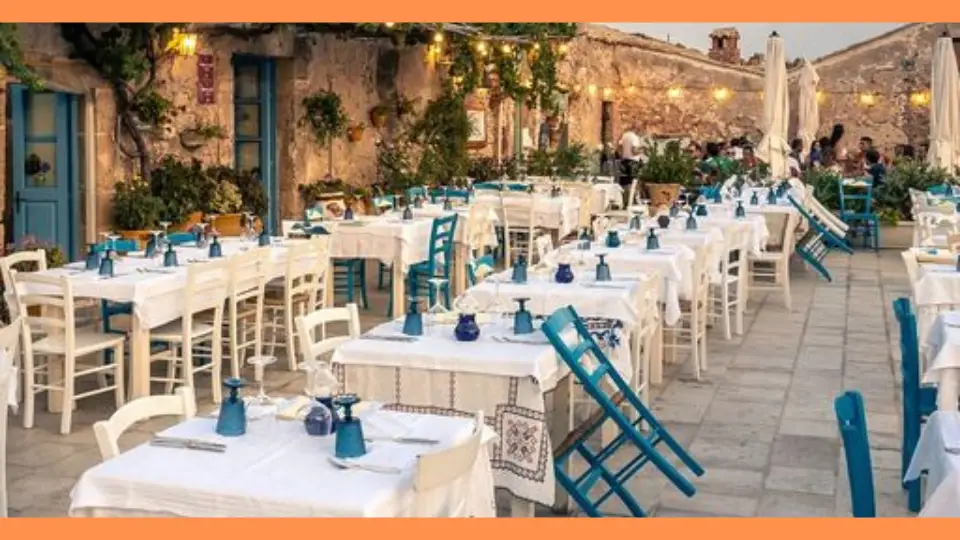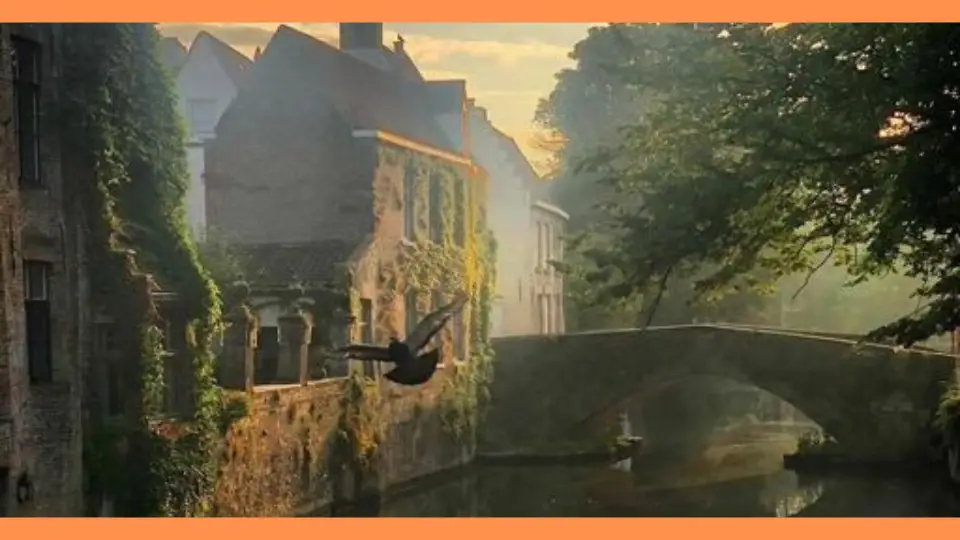Buenos Aires, the capital city of Argentina, is a vibrant metropolis known for its rich cultural heritage, European-style architecture, and bustling arts scene. This guide provides a comprehensive overview of the city’s top tourist destinations, delectable dishes, practical travel tips, and unique experiences, ensuring you make the most of your visit to this enchanting city.
1. Tourist Destinations
Buenos Aires offers a myriad of attractions, from historic sites to picturesque neighborhoods, ensuring there is something for every traveler.
1.1. Historic and Cultural Sites
Plaza de Mayo: As the city’s main square, Plaza de Mayo has been the focal point of many significant events in Argentine history. Surrounded by important buildings such as the Casa Rosada, the Presidential Palace with its iconic pink façade, the Metropolitan Cathedral, and the Cabildo, this square is steeped in history. Visitors can join a guided tour of the Casa Rosada to learn about Argentina’s political history and enjoy stunning views from the balcony.
Teatro Colón: This world-renowned opera house is considered one of the best in the world. Known for its exceptional acoustics and grand architecture, Teatro Colón offers guided tours that take visitors through its opulent interiors, from the main hall to the workshops where costumes and sets are made. Attending a performance here is a must for any music or theater enthusiast.
Recoleta Cemetery: More than just a burial ground, Recoleta Cemetery is an architectural marvel with elaborate mausoleums and statues. It’s the final resting place of many notable Argentines, including Eva Perón. Strolling through its narrow paths feels like walking through a city of the dead, with each tomb telling a story of Argentina’s past.
1.2. Neighborhoods
San Telmo: Known for its bohemian vibe, San Telmo is one of the oldest neighborhoods in Buenos Aires. Its cobblestone streets are lined with antique shops, art galleries, and tango parlors. The neighborhood comes alive on Sundays during the San Telmo Market, where vendors sell everything from antiques to handmade crafts. Street performers and tango dancers add to the lively atmosphere.
La Boca: Famous for its brightly painted houses and the Caminito street museum, La Boca is a colorful and artistic neighborhood. It’s also home to the Boca Juniors football team and their stadium, La Bombonera. Visitors can explore the outdoor Caminito museum, which showcases vibrant street art and sculptures, and catch a live tango performance at one of the local cafes.
Palermo: As the largest neighborhood in Buenos Aires, Palermo is divided into several distinct areas, each with its own charm. Palermo Soho is known for its trendy boutiques, cafes, and street art, while Palermo Hollywood boasts a buzzing nightlife with numerous bars and restaurants. The green spaces of Bosques de Palermo, the Botanical Garden, and the Japanese Garden offer a tranquil escape from the city’s hustle and bustle.
1.3. Museums and Galleries
Museo Nacional de Bellas Artes: This museum houses an extensive collection of European and Argentine art, including works by masters such as Goya, El Greco, and Van Gogh, as well as prominent Argentine artists like Antonio Berni and Xul Solar. The museum’s impressive collection spans from the Middle Ages to contemporary art, making it a must-visit for art lovers.
Malba (Museo de Arte Latinoamericano de Buenos Aires): Dedicated to contemporary Latin American art, Malba features works by renowned artists such as Frida Kahlo, Diego Rivera, and Fernando Botero. The museum’s dynamic exhibitions and cultural programs offer a deep dive into the region’s artistic trends and social issues.
1.4. Parks and Outdoor Spaces
Parque Tres de Febrero: Also known as Bosques de Palermo, this expansive park offers a variety of attractions, including lakes, rose gardens (El Rosedal), and the Planetarium. Visitors can rent paddle boats, take a leisurely bike ride, or simply relax and enjoy the beautiful scenery.
Puerto Madero: Once a bustling port area, Puerto Madero has been transformed into a modern waterfront district with sleek high-rises, upscale restaurants, and the iconic Puente de la Mujer bridge. The area is perfect for a scenic walk along the docks, dining with a view, or exploring the ecological reserve nearby.
2. Delicious Dishes
Buenos Aires is a food lover’s paradise, offering a delectable array of dishes that reflect Argentina’s rich culinary heritage.
2.1. Argentine Specialties
Asado (Argentine BBQ): Asado is more than just a meal in Argentina; it’s a social event. Typically enjoyed with family and friends, an asado features a variety of grilled meats, including beef ribs, sausages, and sweetbreads, cooked over an open flame. The meat is often seasoned with chimichurri sauce, a flavorful mix of parsley, garlic, vinegar, and oil.
Empanadas: These savory pastries are filled with various ingredients, such as beef, chicken, cheese, and vegetables. Empanadas are a popular snack or appetizer, and their fillings and styles can vary by region. In Buenos Aires, the beef empanada, often seasoned with cumin and paprika, is a favorite.
2.2. Local Favorites
Milanesa: Similar to a schnitzel, milanesa is a breaded and fried meat cutlet, usually made from beef or chicken. It’s often served with mashed potatoes, a fried egg, or a fresh salad. For a variation, try milanesa a la napolitana, which is topped with ham, cheese, and tomato sauce, then baked until bubbly.
Provoleta: A deliciously simple dish, provoleta is a thick slice of provolone cheese that’s grilled until it’s melted and slightly crispy on the outside. It’s typically seasoned with oregano and olive oil and served with bread for dipping.
2.3. Desserts and Sweets
Dulce de Leche: This sweet, caramel-like spread is a staple in Argentine desserts. Made by slowly cooking milk and sugar until it turns golden and thick, dulce de leche is used in a variety of treats, from alfajores to pastries and ice cream.
Alfajores: These popular cookies consist of two shortbread-like biscuits filled with dulce de leche and coated in chocolate or powdered sugar. Alfajores come in many varieties, and trying different brands and styles is a delightful part of the Buenos Aires experience.
2.4. Beverages
Mate: Mate is a traditional Argentine herbal tea made from the leaves of the yerba mate plant. It’s typically shared among friends and family, with each person drinking from the same gourd (mate) and metal straw (bombilla). The ritual of preparing and drinking mate is an important part of Argentine culture.
Malbec Wine: Argentina is renowned for its Malbec wine, particularly from the Mendoza region. Rich, robust, and full-bodied, Malbec pairs perfectly with the country’s famous grilled meats. Wine enthusiasts will find numerous wine bars and restaurants in Buenos Aires where they can sample some of the best local vintages.
3. Practical Tips
Traveling to a new city can be daunting, but these practical tips will help you navigate Buenos Aires with ease.
3.1. Transportation
Public Transport: Buenos Aires has an extensive and affordable public transport system, including the Subte (subway) and a comprehensive bus network. The Subte is a convenient way to travel between major attractions, while buses can take you to more remote areas of the city. Purchase a rechargeable SUBE card, which can be used on both the subway and buses.
Taxis and Ride-sharing: Official taxis are plentiful and relatively inexpensive. Make sure the taxi has a meter and check that it’s turned on at the start of your journey. Alternatively, ride-sharing apps like Uber are widely used and provide a safe and convenient option.
Biking: Buenos Aires is becoming increasingly bike-friendly, with dedicated bike lanes and a bike-sharing system called EcoBici. Visitors can register for EcoBici online and use the bikes for free, making it an eco-friendly way to explore the city.
3.2. Money and Payments
Currency: The local currency is the Argentine Peso (ARS). It’s a good idea to carry some cash, especially for smaller vendors and markets, although many places accept credit cards.
Payments: Credit and debit cards are widely accepted in restaurants, hotels, and shops. However, it’s advisable to carry cash for small purchases and tips. ATMs are available throughout the city, but be mindful of potential fees and withdrawal limits.
3.3. Language
Spanish: Spanish is the official language of Argentina. While many people in tourist areas speak some English, learning a few basic Spanish phrases can enhance your experience and help you navigate the city more easily.
English: Although English is not widely spoken outside tourist areas, younger Argentines and those working in hospitality often have a good command of the language. Having a translation app or phrasebook handy can be useful.
3.4. Safety
Personal Safety: Buenos Aires is generally safe for tourists, but it’s important to be cautious, especially in crowded areas. Keep an eye on your belongings, avoid displaying valuables, and be aware of your surroundings. Stick to well-lit, busy areas at night and consider using taxis or ride-sharing services.
Health Precautions: Buenos Aires has a good healthcare system, and there are many pharmacies and medical facilities. Make sure to stay hydrated, use sunscreen, and follow any health advisories. It’s also a good idea to have travel insurance that covers medical emergencies.
4. Experiences
Buenos Aires offers a wealth of unique experiences that provide a deeper understanding of its culture and traditions.
4.1. Cultural Experiences
Tango Shows and Lessons: Tango is an integral part of Buenos Aires’ cultural heritage. Visitors can enjoy professional tango shows at venues such as El Querandí or Café de los Angelitos, which often include dinner. For a more hands-on experience, many dance schools and milongas (tango dance halls) offer lessons for beginners, allowing you to learn the steps and embrace the passion of this iconic dance.
Football Matches: Football (soccer) is more than just a sport in Argentina; it’s a way of life. Attending a match at one of the city’s major stadiums, such as La Bombonera (home to Boca Juniors) or El Monumental (home to River Plate), offers a thrilling experience. The electric atmosphere, passionate fans, and thrilling gameplay make it a must-do activity for sports enthusiasts.
4.2. Festivals and Events
Carnaval Porteño: Held in February, Carnaval Porteño features colorful parades, live music, and dance performances throughout the city. Neighborhoods like San Telmo and Palermo host street parties where you can enjoy the festive atmosphere and join in the celebrations.
Buenos Aires International Book Fair: One of the largest literary events in the Spanish-speaking world, the Buenos Aires International Book Fair takes place in April and May. It attracts authors, publishers, and book lovers from around the globe. The fair offers a variety of events, including book signings, lectures, and workshops.
4.3. Shopping
Feria de San Telmo: This famous Sunday market in San Telmo offers a wide range of antiques, crafts, and souvenirs. It’s a great place to find unique items and enjoy live street performances, including tango dancers and musicians.
Galerías Pacífico: Located in a historic building with stunning architecture, Galerías Pacífico is a high-end shopping mall featuring luxury brands, art galleries, and a beautiful central dome adorned with frescoes. It’s a perfect spot for both shopping and admiring the architectural beauty.
Buenos Aires is a city that captivates visitors with its blend of old-world charm and modern vibrancy. From its historic landmarks and artistic neighborhoods to its delicious cuisine and lively cultural scene, there’s no shortage of things to see and do. Whether you’re exploring the city’s historic sites, indulging in its culinary delights, or immersing yourself in its rich cultural traditions, Buenos Aires promises an unforgettable experience. Pack your bags, brush up on your Spanish, and get ready to discover the magic of this incredible city.










